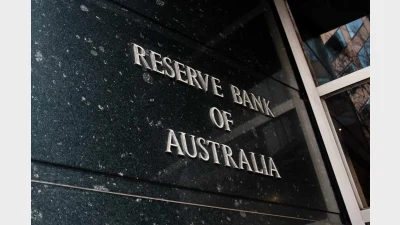A superannuation guarantee increase - do the ends justify the means?


Should the financial services industry risk a giant headache to achieve an increase in the superannuation guarantee at any price, including being linked with a contentious resources tax?
By the time this edition of Super Review is distributed to subscribers the Treasurer, Wayne Swan, will have handed down a Federal Budget and the industry will have had time to digest the changes which impact members of superannuation funds.
If the industry has been lucky, the Government will have addressed the unintended consequences flowing from the 2008 Budget which saw a number of changes to superannuation, including the halving of concessional superannuation contribution caps.
Given Swan’s fiscally austere rhetoric during the closing weeks of April and the first week of May it was probably too much to hope the Government would restore the concessional caps to their pre-July 2009 levels but there was good reason to believe adjustments would be made to eliminate many of the unintended consequences which have exposed fund members to heavy tax penalties.
That hope was based on the virtually united front demonstrated by the financial services industry on the need for change, including a well-constructed recommendation by the Australian Institute of Superannuation Trustees (AIST).
The Australian Labor Party has, with some justification, laid claim to being the author of the superannuation industry in Australia. It was, after all, the ALP under the Hawke/Keating Government which inspired the evolution of award superannuation into the superannuation guarantee and spawned an industry now worth more than $1.3 trillion.
It is, of course, history that former Treasurer and Prime Minister, Paul Keating’s strategy to see the superannuation guarantee rise progressively to 15 per cent and beyond was stymied by the position adopted and maintained by the Howard Government but, in equal measure, the ALP was also seen to abandon the original Keating strategy.
Through a number of its years in Opposition and then during its first term in office, the Labor Party made clear it was no longer wedded to the gradual increases in the compulsory superannuation guarantee originally envisaged by Keating.
Rather, with some minor amendments, it tended to echo the rhetoric of the Coalition and the strategies of co-contribution and ‘soft compulsion’.
It was only in the midst of discussion around the Henry Tax Review and the proposed implementation of a Resource Super Profits Tax that the Government found itself able to discuss lifting the superannuation guarantee from its more than decade-long level of 9 per cent to 12 per cent — and, then, only after a prolonged time-frame.
The Government, via the Assistant Treasurer and Minister for Financial Services, Bill Shorten, has spent most of the past four months imploring the financial services industry to help it sell the Mineral Resources Rent Tax because, by doing so, they will ultimately succeed in delivering the much-needed increase in the superannuation guarantee.
What the financial services industry should be asking itself is whether it wants to achieve the increase in the superannuation guarantee at any price, including the implicit translation of the superannuation guarantee from being a ‘non-wage benefit’ to being a ‘tax’.
What became obvious during the Super Review roundtable held during the Conference of Major Superannuation Funds (CMSF) (pages 12-17) is that while virtually all the participants were uncomfortable with the linking of the superannuation guarantee to an MRRT, some believed the price would not ultimately be too high.
However, as the chairman of State Super and former senior adviser to Paul Keating, Don Russell made clear, the Government is capable of delivering on an increase in the superannuation guarantee without tying it to a tax — and probably should do so.
“Every government works within its own regime of budget discipline and they’ve adopted this notion that it has to work within the framework of an extra tax on the mining sector.
I’m sure if they want to do it, they can. The sums aren’t that big in terms of the cost of the superannuation increase, because it happens so slowly and it’s so far away that most of it is way beyond their budget arithmetic anyway,” Russell said.
Thus, the danger for the ALP in pursuing its current strategy of linking a rise in the superannuation guarantee to the implementation of an MRRT is that while it will continue to be seen as the creator of the modern Australian superannuation industry, it will also be recognised as the party which made superannuation part of a far more complex tax debate.
The chief executive of the Australian Institute of Superannuation Trustees (AIST), Fiona Reynolds, quite rightly points out that there is merit in a tax which allows Australians a share of the wealth being generated by the resources boom, but the consequence of linking such a tax to the delivery of the superannuation guarantee is likely to be a long-term headache for the superannuation industry.
What the industry should be asking itself is what form of tax will need to be introduced to justify lifting the superannuation guarantee from 15 to 18 per cent and what sort of Government would be willing to take the risk of doing so?
Recommended for you
High risk, high return assets will become dangerous options for superannuation funds under the Federal Government’s planned $3 million superannuation changes, writes Brad Twentyman.
Economic policy can no longer ignore the macroeconomic impacts of Australia's superannuation system and the emerging policy implications, writes Tim Toohey.
In an age where climate concerns and social consciousness dominate headlines, it’s no surprise that investors are increasingly seeking investments that align with their values, writes Simon O’Connor.
How profit-for-member superannuation funds can embed 'commerciality with a heart' and marry a member-first culture with commercial outcomes.













